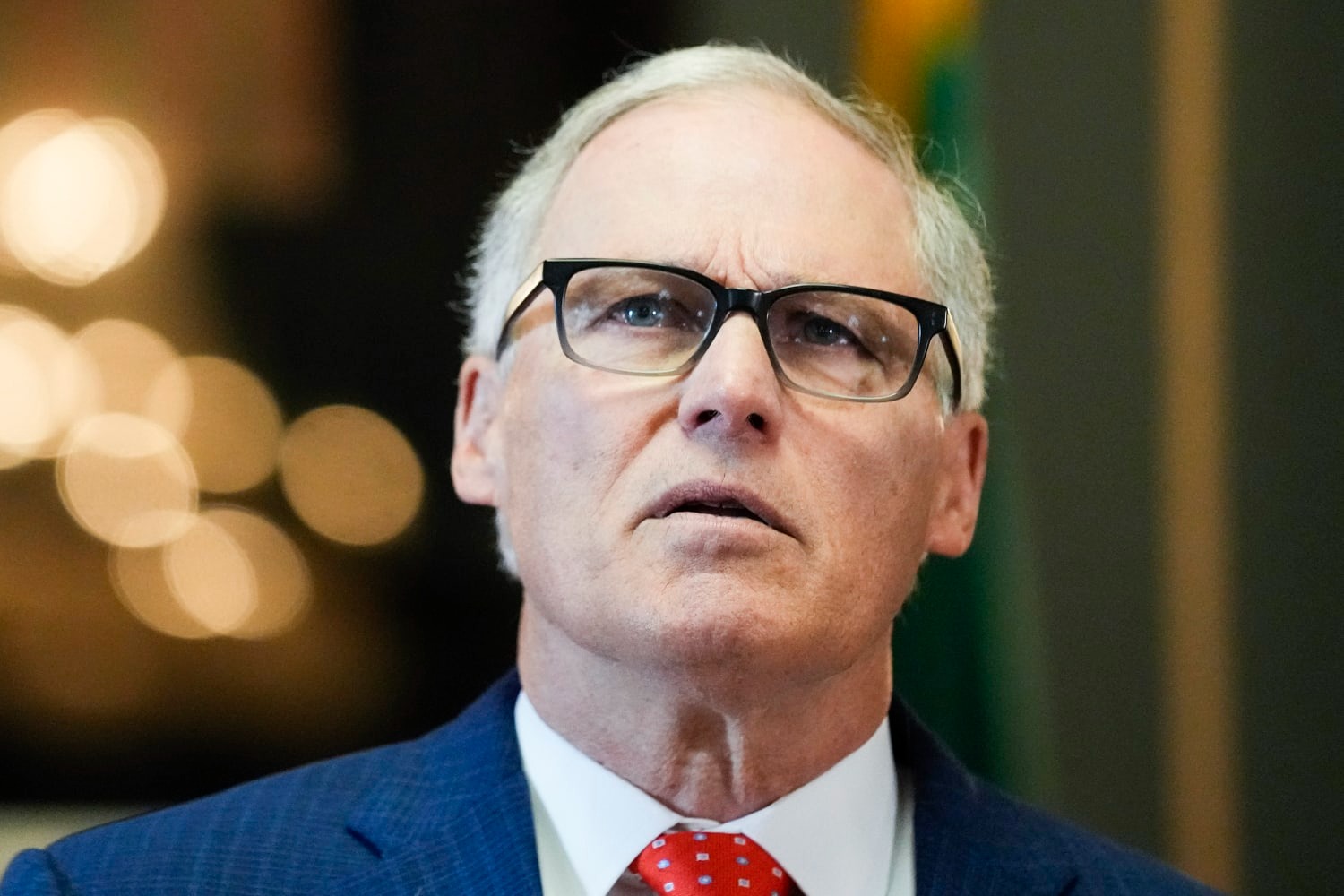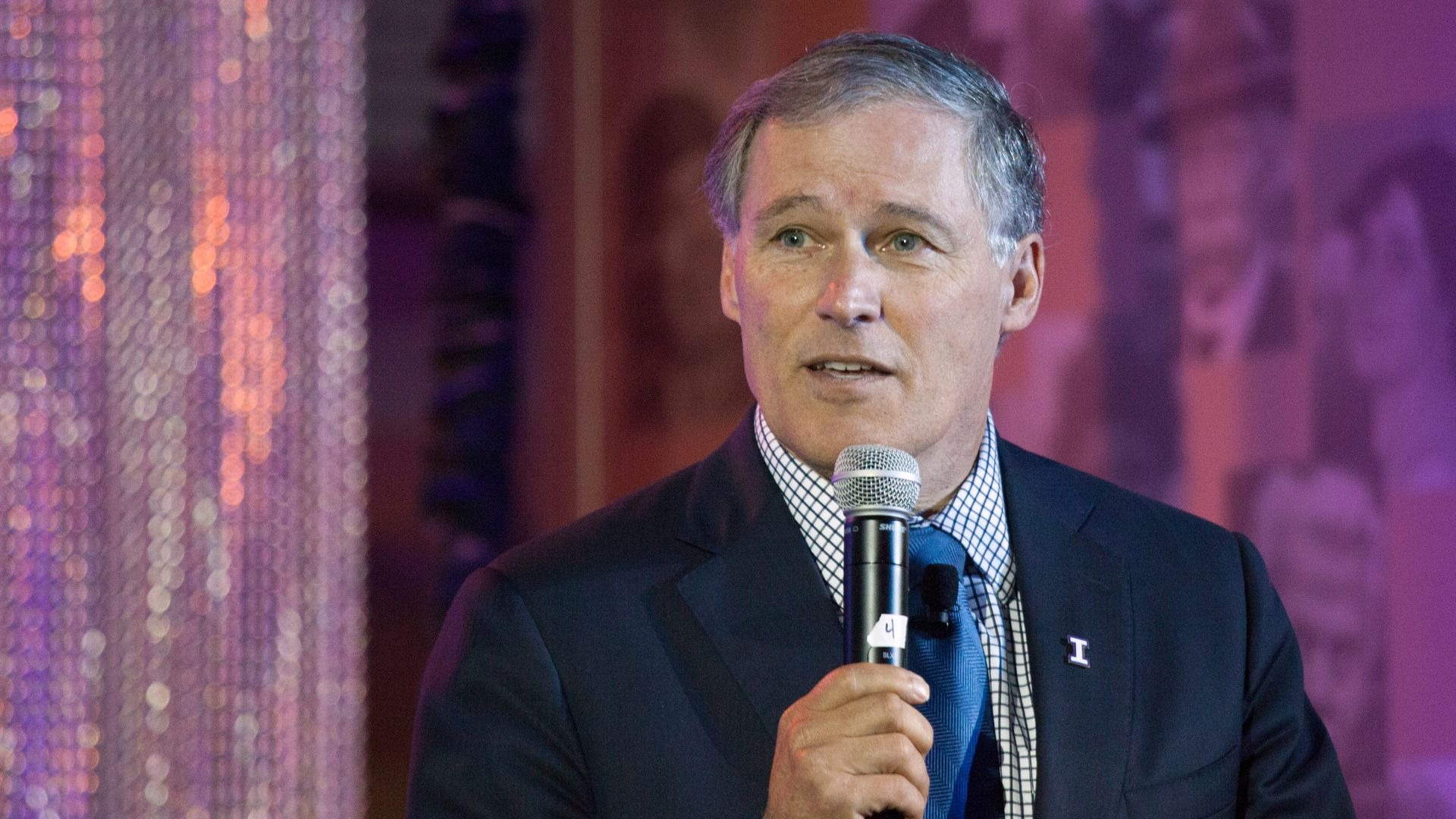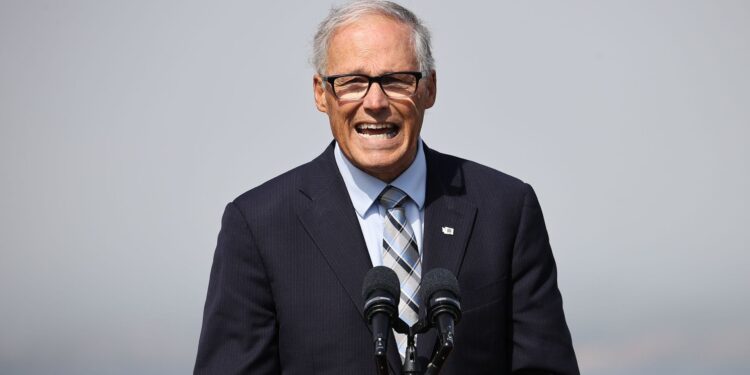Jay Inslee is a public servant whose career has spanned law, politics, and governance. Born on February 9, 1951, in Seattle, Washington, he grew up in a household that placed strong value on discipline, education, and responsibility. His early life was shaped by both hard work and the influence of his parents; his father was a high school teacher and athletic coach, while his mother was employed at Sears.
This type of upbringing set the foundation for the discipline and focus that later marked his political path. During his youth, Inslee attended Ingraham High School, where he showed academic potential and was active in extracurricular activities. Later, he went to Stanford University on a scholarship.
However, he transferred to the University of Washington due to financial challenges. He eventually earned a degree in economics before moving on to Willamette University College of Law in Oregon, where he earned his law degree. After completing law school, he began practicing as a city prosecutor in Selah, Washington.

Political Journey and Career Moves
Inslee first entered politics in the 1980s when he became interested in public service in Yakima Valley. He contested for the Washington State House of Representatives and won in 1988. That win marked the start of what would become a long political journey.
He later contested for and won a seat in the United States House of Representatives in 1992, representing Washington’s 4th Congressional District. Although he lost the re-election in 1994, he did not leave politics. By 1998, Inslee returned to Congress, this time representing Washington’s 1st District.
His focus during his time in the House included education, environmental policy, and clean energy initiatives. Through consistent involvement in legislative matters related to climate change and technology, Inslee gradually built a reputation for being deeply concerned about environmental issues.
In 2012, he became the Governor of Washington State after a tough election campaign. He assumed office in January 2013 and has since been re-elected twice, making him one of the longest-serving governors in the United States today. His administration prioritised health care access, climate policies, clean energy, and education reform.
In 2019, he announced that he was running for President of the United States. Although he ended his campaign later that year, the move drew national attention and strengthened his profile as a public figure pushing for climate action.
Estimated Financial Worth and Income Sources
Jay Inslee’s financial standing reflects a life dedicated to public service rather than private business. His net worth is estimated to be within the range of $600,000 to $1.5 million. This valuation comes from a mix of salary earnings, real estate ownership, investments, and pension contributions over several decades of public work.
As a sitting governor, Inslee receives a salary that is typical for a position of his level. His annual pay is estimated at over $180,000. Added to that are benefits tied to the role, including healthcare and allowances for official duties.
Outside of his salary, Inslee has some assets in mutual funds, retirement accounts, and public employee pensions. Also, his earnings from the House of Representatives, as well as from previous legal work and state pensions, have added to his financial base. Unlike many political figures who accumulate large fortunes through book deals or corporate ventures, Inslee’s finances have stayed relatively modest and steady.
Real Estate Holdings and Cars
Jay Inslee and his wife Trudi own a private residence in Bainbridge Island, Washington. The property is modest by political standards and reflects their lifestyle as a couple who have largely remained outside the world of luxury and extravagance. The home features a comfortable structure surrounded by green areas, and it serves as both a private home and a retreat from public life.
Information about cars owned by Inslee has not been heavily publicised, which is not unusual for governors in states like Washington. Most of his travel for official duties is done in state-owned vehicles provided by the government. These cars are maintained by the state’s Department of Enterprise Services and are rotated based on need and availability.
Family Life and Personal Background
Jay Inslee has been married to Trudi Inslee for many decades. They met during high school and got married in 1972. Trudi has played a supportive role in his political career and often participates in civic activities related to public health, education, and women’s rights. The couple has three sons, and they maintain close ties with their extended family.
Although his schedule is often packed with meetings, travel, and governance responsibilities, Inslee makes time for family, especially during holiday periods. He has often spoken publicly about the importance of family structure and stable home environments in shaping both policy and society.
Approach to Climate Issues and National Reputation
One of the strongest aspects of Inslee’s political image has been his position on clean energy and environmental protection. Long before climate matters became a central issue in national politics, Inslee was already speaking about the need for renewable energy and carbon emission control.
During his time in Congress, he introduced multiple bills to support solar, wind, and sustainable transportation efforts. As governor, he helped establish Washington State’s Clean Energy Fund, promoted cap-and-invest policies, and supported job creation within green industries.
Although these moves sometimes brought opposition from industrial lobbyists and some business owners, they also earned support from many younger voters and environmental groups. His presidential campaign in 2019 was built entirely around this same idea, fighting global warming through government-led initiatives.
While that campaign didn’t go far, it placed him in national conversations and allowed his work in Washington State to serve as an example of what similar policies could look like on a national scale.
Public Image and Leadership Style
Inslee’s leadership has been described as calm, focused, and issue-driven. During the COVID-19 pandemic, he made difficult decisions involving statewide lockdowns, mask mandates, and vaccine distribution plans. While not everyone agreed with his strategies, he was consistent in his explanations and prioritised medical advice.
He communicates in a style that is clear and deliberate, rarely making sudden announcements without detailed explanation. Even during tense moments, such as protests or budget negotiations, Inslee has maintained a public image built on steady reasoning rather than dramatic speeches.
His interactions with other governors, national leaders, and the White House have also shown that he values cooperation where possible. He often collaborates with other state leaders, especially when dealing with issues like healthcare, energy policies, and education frameworks.

Retirement Plans and Ongoing Role
As of 2025, Jay Inslee has said that he does not plan to run for a fourth term as governor. This will mark the end of 12 years leading the state of Washington. While he has not ruled out future involvement in public service, there are hints that he may focus on writing, advocacy, and mentoring younger politicians.
Although he is stepping away from an official post, many expect that his voice will still carry weight in matters related to clean energy and public policy. Whether through guest speaking roles, advisory positions, or campaign support for other candidates, Inslee is likely to remain involved in the political space for some time.
He and Trudi are expected to continue residing in Bainbridge Island, enjoying a slower pace of life while staying active in issues they care about. Their long-standing dedication to service and family is likely to keep them visible both in their community and on national platforms where experience and stability are respected.
Jay Inslee represents a style of leadership built on discipline, education, and consistency. With a career stretching across law, public service, and state governance, his life shows how long-term dedication to public values can shape both policy and society.
His approach has always leaned toward sustainability, health care access, and education, and even as he prepares to step away from office, these areas remain part of his focus.
Though his net worth may not be the highest among his peers, his influence and record of service reflect a different type of wealth, one rooted in steady work, transparency, and long-term vision. His legacy, both as a politician and a family man, remains strongly linked to the values he upheld from his early days in Seattle to his last term as Washington’s governor.






















